Study on the Trade-Off and Synergy Between Agricultural Water–Soil Matching and Ecosystem Service Value in the Tailan River Irrigation District of Xinjiang
Abstract
1. Introduction
2. Materials and Methods
2.1. Study Area
2.2. Data Source
2.3. Research Methods
2.3.1. Changes in Land Utilization in the Irrigation District
2.3.2. Cultivated Land Reclamation Rate in the Irrigation District
2.3.3. Agricultural Water–Soil Matching Coefficient in the Irrigation District
2.3.4. Lorenz Curve and Gini Coefficient in the Irrigation District
2.3.5. ESV of the Irrigation District
2.3.6. ESV Sensitivity Test and Trade-Off Synergy Analysis in the Irrigation District
3. Results
3.1. Spatiotemporal Dynamic Changes of LU in the Tailan River Irrigation District
3.2. Reclamation Rate and Matching Gini Coefficient in the Tailan River Irrigation District
3.3. Spatiotemporal Distribution of Agricultural Water–Soil Matching in the Tailan River Irrigation District
3.4. Spatiotemporal Variation and Sensitivity Test of the ESV in the Tailan River Irrigation District
3.4.1. Spatiotemporal Changes of the ESV of Each LU and Secondary Service Category in the Irrigation District from 2000 to 2020
3.4.2. Spatiotemporal Changes of the ESV in Each Unit of the Irrigation District from 2000 to 2020
3.4.3. ESV Sensitivity Test in the Irrigation District
3.5. Trade-Off Synergy Between Agricultural Water–Soil Matching and Ecosystem Services in the Tailan River Irrigation District
4. Discussion
4.1. Irrigation District Ecosystem Under LU Change
4.2. Ecosystem Service Function of the Irrigation District Under ESV Change
4.3. Regulation Strategy of the Irrigation District from the Perspective of Trade-Off Coordination
4.4. Research Limitations and Suggestions
5. Conclusions
- (1)
- An excess of 80% of all land in the Tailan River Irrigation District from 2000 to 2020 was mainly composed of dryland and grassland. Dryland and construction land were the two categories with the biggest turn-in areas in the irrigation district, while grassland and unused land were the two categories with the biggest turn-out areas in the irrigation district, and the conversion areas were mostly concentrated in the east of Jiamu Town, the middle of Yixilaimuqi Township, the southeast of Guleawati Township, and the southwest of Kezile Town. Among the changes of single LU dynamic degrees, the top three were forest land, paddy fields, and unused land, indicating that the changes of the three are the most significant at that period.
- (2)
- Between 2000 and 2020, the cultivated land acreage within the irrigation zone demonstrated a progressive annual expansion, culminating in a cumulative augmentation of approximately 36.14% in the overall reclamation rate. However, the annual reclamation rate of cultivated land in each unit was different. The highest reclamation rate was 85.93% in Kezile Town, and the lowest was 76.37% in Guleawati Township. Additionally, the average Gini coefficient of agricultural water–soil in the irrigation district between 2000 and 2020 was 0.118, which is the same as the multi-year Gini coefficient and is in the absolutely fair interval.
- (3)
- The years 2010 and 2015 were those with the most and least agricultural water consumption in the irrigation district. Although the agricultural water consumption of Kezile Town ranked first in each unit, the agricultural water–soil matching situation was not the best and was always fluctuating. On the contrary, although the Communist Youth League Town had the least amount of agricultural water consumption over the years, the matching status of agricultural water–soil remained the best for many years. In addition, the overall agricultural water–soil matching coefficient of the irrigation district gradually decreased from 1.058 in 2000 to 0.426 in 2015, and increased to 0.538 until 2020, reflecting the profound influence of agricultural water consumption and cultivated land reclamation rate on water–soil matching in the irrigation district.
- (4)
- Between 2000 and 2020, the ESV of the irrigation district exhibited a consistent upward trajectory, escalating from CNY 243 million in 2000 to CNY 678 million in 2020. Although it was lower than the total value of CNY 732 million in 2015, the growth state of the ESV over the past two decades was still obvious. The proportion of contribution from dryland to the ESV in each period was more than 30%, and more than 50% after 2010. Among the secondary services, soil conservation and hydrological regulation services contributed the most to the ESV in each period. The spatial distribution of the ESV shows a staggered phenomenon. The ESV low-value zones were mostly distributed near the unused land in the irrigation district, and the ESV higher-value zones were mostly distributed in strips around the water of each unit in the irrigation district.
- (5)
- The agricultural water–soil matching in the Tailan River Irrigation District is closely related to the provision, regulation, support, and culture services, and shows a significant trade-off relationship. There are also significant synergies among ecosystem services.
Author Contributions
Funding
Institutional Review Board Statement
Informed Consent Statement
Data Availability Statement
Acknowledgments
Conflicts of Interest
Abbreviations
| ESV | Ecosystem service value |
| CNY | Chinese Yuan |
| LU | Land use |
References
- Liu, D.; Liu, C.; Fu, Q.; Li, M.; Faiz, M.A.; Khan, M.I.; Li, T.; Cui, S. Construction and application of a refined index for measuring the regional matching characteristics between water and land resources. Ecol. Indic. 2018, 91, 203–211. [Google Scholar] [CrossRef]
- Miao, L.; Zhang, J.; Kattel, G.R.; Liu, R. Increased exposure of China’s cropland to droughts under 1.5 °C and 2 °C global warming. Atmosphere 2022, 13, 1035. [Google Scholar] [CrossRef]
- Han, X.; Zhao, Y.; Gao, X.; Jiang, S.; Lin, L.; An, T. Virtual water output intensifies the water scarcity in Northwest China: Current situation, problem analysis and countermeasures. Sci. Total Environ. 2021, 765, 144276. [Google Scholar] [CrossRef] [PubMed]
- Du, J.; Yang, Z.; Wang, H.; Yang, G.; Li, S. Spatial-temporal matching characteristics between agricultural water and land resources in Ningxia, Northwest China. Water 2019, 11, 1460. [Google Scholar] [CrossRef]
- Han, Z.; Wu, S.; Liu, J. Land use change and its impact on the quality of the ecological environment in Xinjiang. Sustainability 2024, 16, 10114. [Google Scholar] [CrossRef]
- Yang, J.; Li, Y.; Zhou, L.; Zhang, Z.; Zhou, H.; Wu, J. Effects of temperature and precipitation on drought trends in Xinjiang, China. J. Arid Land 2024, 16, 1098–1117. [Google Scholar] [CrossRef]
- Yu, X.; Lei, J.; Gao, X. An over review of desertification in Xinjiang, Northwest China. J. Arid Land 2022, 14, 1181–1195. [Google Scholar] [CrossRef]
- Zhang, Y.; Yan, Z.; Song, J.; Wei, A.; Sun, H.; Cheng, D. Analysis for spatial-temporal matching pattern between water and land resources in Central Asia. Hydrol. Res. 2020, 51, 994–1008. [Google Scholar] [CrossRef]
- Wu, Y.; Qin, F.; Dong, X.; Li, L. Investigating the Spatio-Temporal Evolution of Land Cover and Ecosystem Service Value in the Kuye River Basin. Water 2024, 16, 2456. [Google Scholar] [CrossRef]
- Xiao, J.; Zhang, Y.; Xu, H. Response of ecosystem service values to land use change, 2002–2021. Ecol. Indic. 2024, 160, 111947. [Google Scholar] [CrossRef]
- Xie, G.Y.; Zhang, F.Y. Research on Time and Space Matching of Agricultural Water and Soil Resources in Xinjiang. China Rural. Water Hydropower 2020, 6, 58–62. [Google Scholar]
- Wang, Y.; Jiang, Z.H.; Chu, J.Q.; Zhang, H.K.; Liu, X.M.; Lin, Y.N. Study on the spatiotemporal matching relationship of agricultural water and land resources in the Tarim River basin. J. Agric. Resour. Environ. 2024, 41, 360–370. [Google Scholar]
- Xu, N.; Zhang, J.; Zhang, R.; Tian, F. Study on matching characteristics of agricultural water and soil resources based on dea—Take Gansu Province 5 watershed as an example. Chin. J. Agric. Resour. Reg. Plan. 2020, 41, 277–285. [Google Scholar]
- Yang, Y.; Wang, H.; Wang, C.; Zhang, Y. Coupling variable fuzzy sets and Gini coefficient to evaluate the spatial equilibrium of water resources. Water Resour. 2022, 49, 292–300. [Google Scholar] [CrossRef]
- Gao, Y.; Li, P.; Hou, H.; Liang, Z.; Zhang, Y.; Qi, X. Evaluation of agricultural water and soil resource matching characteristics considering increased precipitation-derived “green water”: A case study in the Yellow River Basin, China. Mitig. Adapt. Strateg. Glob. Change 2023, 28, 6. [Google Scholar] [CrossRef]
- Li, X.Y.; Hao, J.M.; Chen, A.Q. Time-space matching pattern and evaluation of agricultural water and soil resources in Shandong Province. J. China Agric. Univ. 2020, 25, 1–11. [Google Scholar]
- He, C.G.; Yao, H.Z.; Yu, G.H.; Guan, W.; Xu, B.B.; She, D.L. Balance Between Water Resources and Soil Resources in Coastal Regions of Jiangsu Province and Its Economic Analysis. J. Irrig. Drain. 2023, 2, 110–116. [Google Scholar]
- Wang, L.; Jie, F.; He, B. Study on planting development layout in arid region based on matching characteristics of agricultural water and soil resources. Environ. Dev. Sustain. 2025, 1–30. [Google Scholar] [CrossRef]
- Qu, S.H.; Yao, H.Z.; Wang, Y.D.; Chen, Y.; Peng, Y.M.; Fang, K.; She, D.L. Matching Status and Bearing Capacity Characteristics of Agricultural Water and Land Resources in Typical Irrigation Districts of Jiangsu Province. Res. Soil Water Conserv. 2023, 6, 452–457+467. [Google Scholar]
- Costanza, R.; D’Arge, R.; De Groot, R.; Farber, S.; Grasso, M.; Hannon, B.; Van Den Belt, M. The value of the world’s ecosystem services and natural capital. Nature 1997, 387, 253–260. [Google Scholar] [CrossRef]
- Xie, G.D.; Lu, C.X.; Leng, Y.F.; Zheng, D.; Li, S.C. Ecological assets valuation of the Tibetan Plateau. J. Nat. Resour. 2003, 18, 189–196. [Google Scholar]
- Xie, G.D.; Zhang, Y.L.; Lu, C.X.; Zheng, D.; Cheng, S.K. Study on the valuation of rangeland ecosystem services of China. J. Nat. Resour. 2001, 16, 47–53. [Google Scholar]
- Xie, G.; Xiao, Y.; Lu, C. Study on ecosystem services: Progress, limitation and basic paradigm. Chin. J. Plant Ecol. 2006, 30, 191. [Google Scholar]
- Zhao, Y.; Zhang, Y.F.; Bu, X.; Li, Y.F.; He, Z.F. Land use change and its impact on ecosystem service value in Xinjiang from 2000 to 2020. J. Tianjin Norm. Univ. (Nat. Sci. Ed.) 2023, 6, 53–60+80. [Google Scholar]
- Xie, L.; Wang, H.; Liu, S. The ecosystem service values simulation and driving force analysis based on land use/land cover: A case study in inland rivers in arid areas of the Aksu River Basin, China. Ecol. Indic. 2022, 138, 108828. [Google Scholar] [CrossRef]
- Hu, X.Y.; Song, Y.Q.; Lu, L. Impacts of Land Use Changes on Ecosystem Service Value in Hongsipu Irrigated Area. Acta Sci. Nat. Univ. Pekin. 2017, 53, 939–947. [Google Scholar]
- An, S.W.; Ma, C.H.; Hua, Y.Q.; Li, C.H. Analysis of Ecosystem Service Value Profit and Loss Under the Oasis Development Model of the Ecological Fragile Area in the Upper Yellow River—A Case Study of Hongsibu District in Ningxia. Res. Soil Water Conserv. 2022, 6, 375–382. [Google Scholar]
- Schirpke, U.; Tscholl, S.; Tasser, E. Spatio-temporal changes in ecosystem service values: Effects of land-use changes from past to future (1860–2100). J. Environ. Manag. 2020, 272, 111068. [Google Scholar] [CrossRef]
- Ran, P.; Frazier, A.E.; Xia, C.; Tiando, D.S.; Feng, Y. How does urban landscape pattern affect ecosystem health? Insights from a spatiotemporal analysis of 212 major cities in China. Sustain. Cities Soc. 2023, 99, 104963. [Google Scholar] [CrossRef]
- Zhang, M.; Chen, E.; Zhang, C.; Liu, C.; Li, J. Multi-scenario simulation of land use change and ecosystem service value based on the Markov–FLUS model in Ezhou City, China. Sustainability 2024, 16, 6237. [Google Scholar] [CrossRef]
- Wu, C.; Wang, Z. Multi-scenario simulation and evaluation of the impacts of land use change on ecosystem service values in the Chishui River Basin of Guizhou Province, China. Ecol. Indic. 2024, 163, 112078. [Google Scholar] [CrossRef]
- Jiang, Y.; Du, G.; Teng, H.; Wang, J.; Li, H. Multi-scenario land use change simulation and spatial response of ecosystem service value in black soil region of northeast China. Land 2023, 12, 962. [Google Scholar] [CrossRef]
- Wei, J.; Tian, M.; Wang, X. Spatiotemporal variation in land use and ecosystem services during the urbanization of Xining City. Land 2023, 12, 1118. [Google Scholar] [CrossRef]
- Shao, S.; Li, W.; Yan, Z.; Zhou, W. Spatial and Temporal Evolution of the Value of Ecosystem Services in Jiuquan, China, from 2005 to 2020. Sustainability 2025, 17, 507. [Google Scholar] [CrossRef]
- Yang, L.; Zhang, S.; Luo, M.; Zhao, X.; Lin, X.; Zhang, Q.; Fang, K.; Lv, S. Impacts of land use and crop structure change on the value of ecosystem services in Hetao Irrigation District of China. J. Clean. Prod. 2024, 480, 144113. [Google Scholar] [CrossRef]
- Chen, J.R.; Tang, D.S. An Evaluation of the Water Demand of Tailan Irrigation Project Based on the ANP-FCE. China Rural. Water Hydropower 2014, 3, 159–161+165. [Google Scholar]
- Camacho-Valdez, V.; Ruiz-Luna, A.; Ghermandi, A.; Berlanga-Robles, C.A.; Nunes, P.A. Effects of land use changes on the ecosystem service values of coastal wetlands. Environ. Manag. 2014, 54, 852–864. [Google Scholar] [CrossRef]
- Liu, Y.; Ma, C.; Ma, L.; Li, N. Ecological effects of land use and land cover change in the typical ecological functional zones of Egypt. Ecol. Indic. 2024, 168, 112747. [Google Scholar] [CrossRef]
- Wu, Y.; Liu, X.; Zhao, Q.; Liu, H.; Qu, F.; Zhang, M. Impact of Land Use/Land Cover Change on Ecosystem Service Trade-Offs/Synergies—A Case Study of Gangu County, China. Sustainability 2024, 16, 5929. [Google Scholar] [CrossRef]
- Wang, Y.; Shataer, R.; Zhang, Z.; Zhen, H.; Xia, T. Evaluation and analysis of influencing factors of ecosystem service value change in Xinjiang under different land use types. Water 2022, 14, 1424. [Google Scholar] [CrossRef]
- Du, G.; Li, Y.; Yu, F.; Zhang, S.; Yang, F. Change characteristics analysis of farmland in Northern Sanjiang Plain in 20002009 based on remote sensing. Trans. Chin. Soc. Agric. Eng. 2012, 28, 225–229. [Google Scholar]
- Li, H.; Zhou, W.; Zhuang, Y.; Ma, C.; Liu, B. Agricultural water and soil resources matching patterns and carrying capacity in Yan’an City. Trans. Chin. Soc. Agric. Eng. 2016, 32, 156–162. [Google Scholar]
- Bai, J.; Li, Y.; Zhou, W. Matching and carrying capacity of agricultural water and soil resources in Yulin City. J. Drain. Irrig. Mach. Eng. 2017, 35, 609–615. [Google Scholar]
- Jiang, N.; Fu, Q. Spatial matching analysis of Heilongjiang Province’s water resource based on Gini coefficient. J. Northeast Agric. Univ 2010, 41, 56–60. [Google Scholar]
- Li, N.; Wang, J.; Wang, H.; Fu, B.; Chen, J.; He, W. Impacts of land use change on ecosystem service value in Lijiang River Basin, China. Environ. Sci. Pollut. Res. 2021, 28, 1–16. [Google Scholar] [CrossRef]
- Hu, S.; Chen, L.; Li, L.; Zhang, T.; Yuan, L.; Cheng, L.; Wang, J.; Wen, M. Simulation of land use change and ecosystem service value dynamics under ecological constraints in Anhui Province, China. Int. J. Environ. Res. Public Health 2020, 17, 4228. [Google Scholar] [CrossRef]
- Xie, G.D.; Zhang, C.X.; Zhang, L.M.; Chen, W.H.; Li, S.M. Improvement of the Evaluation Method for Ecosystem Service Value Based on Per Unit Area. J. Nat. Resour. 2015, 30, 1243–1254. [Google Scholar]
- Yang, Y.; Qin, T.; Yan, D.; Liu, S.; Feng, J.; Wang, Q.; Liu, H.; Gao, H. Analysis of the evolution of ecosystem service value and its driving factors in the Yellow River Source Area, China. Ecol. Indic. 2024, 158, 111344. [Google Scholar] [CrossRef]
- Shi, X.W.; Chen, X.H.; Cai, M.Y.; Zhang, X.S.; Shen, Z.; Tai, W.F.; Shen, W.; Li, J.; Xiao, T. Evaluation of Changes in Ecosystem Services in Ecological Conservation Red Line and the Entire Area of Ningxia. J. Geo-Inf. Sci. 2023, 25, 999–1011. [Google Scholar]
- Yueriguli, K.; Yang, S.; Zibibula, S. Impact of land use change on ecosystem service value in Ebinur Lake Basin, Xinjiang. Trans. Chin. Soc. Agric. Eng 2019, 35, 268–277. [Google Scholar]
- Costanza, R.; De Groot, R.; Sutton, P.; Van der Ploeg, S.; Anderson, S.J.; Kubiszewski, I.; Farber, S.; Turner, R.K. Changes in the global value of ecosystem services. Glob. Environ. Change 2014, 26, 152–158. [Google Scholar] [CrossRef]
- Qi, L.P.; Yan, D.D.; Li, J.T.; Yao, X.Y.; Xue, Y.Y.; Luan, Z.Q. Dynamics of ecosystem services value in response to land use/land cover changes in Jiangsu Province. J. Beijing Norm. Univ. (Nat. Sci.) 2021, 57, 255–264. [Google Scholar]
- Yushanjiang, A.; Zhang, F.; Kung, H.T.; Li, Z. Spatial-temporal variation of ecosystem service values in Ebinur Lake Wetland National Natural Reserve from 1972 to 2016, Xinjiang, arid region of China. Environ. Earth Sci. 2018, 77, 586. [Google Scholar] [CrossRef]
- Peng, W.F.; Zhou, J.M.; Fan, S.Y.; Yang, C.J. Effects of the land use change on ecosystem service value in Chengdu, western China from 1978 to 2010. J. Indian Soc. Remote Sens. 2016, 44, 197–206. [Google Scholar] [CrossRef]
- Cao, A.; Zhang, J. Multi-scenario prediction of ecosystem services value and mechanism of its trade-offs under the township scale-evidence from Liaoning province. Environ. Monit. Assess. 2025, 197, 204. [Google Scholar] [CrossRef]
- Niu, T.; Yu, J.; Yue, D.; Yang, L.; Mao, X.; Hu, Y.; Long, Q. The temporal and spatial evolution of ecosystem service synergy/trade-offs based on ecological units. Forests 2021, 12, 992. [Google Scholar] [CrossRef]
- Peng, D.M.; Zhao, C.Y.; Sun, D.Y.; Yan, Y.Y.; Li, J.Y.; Wei, H.; Li, Z.L. Study on Land Use Change and Ecological Effect in Tailan River Watershed in Recent 15 years. Soils 2010, 1, 136–141. [Google Scholar]
- Habibullah, M.S.; Din, B.H.; Tan, S.H.; Zahid, H. Impact of climate change on biodiversity loss: Global evidence. Environ. Sci. Pollut. Res. 2022, 29, 1073–1086. [Google Scholar] [CrossRef]
- Sun, D.Y.; Zhao, C.Y.; Peng, D.M.; Li, J.Y.; Yan, Y.Y.; Wei, H. Dynamics of Water Resources and Land Use in Oasis Irrigation Area in Tailan River Watershed. Bull. Soil Water Conserv. 2010, 3, 158–162. [Google Scholar]
- Xu, Q.; Zhang, Z.; Liu, X.; Wang, Z.; Ren, C.; Xia, T.; Sun, G.; Han, L. Analysis of Ecosystem Service Value Trends and Drivers in the Yellow River Delta, China. Agriculture 2025, 15, 346. [Google Scholar] [CrossRef]
- Li, W.J.; Xu, W.Q.; Bao, A.M.; Lü, Y. Analysis of cultivated land change and water-land matching characteristics in Amu Darya River Basin. Water Resour. Prot. 2021, 37, 80–86. [Google Scholar]
- Wang, X.; Wang, X.; Zhang, X.; Zhou, J.; Jia, Z.; Ma, J.; Yao, W.; Tu, Y.; Sun, Z.; Wei, Y. Ecological barriers: An approach to ecological conservation and restoration in China. Ambio 2024, 53, 1077–1091. [Google Scholar] [CrossRef] [PubMed]
- Tang, C.S.; Liu, B.; Vahedifard, F.; Jiang, N.J.; Zhu, C.; Shen, Z.T.; Pan, X.H.; Cheng, Q.; Shi, B.; Shi, B. Enhancing soil resilience to climatic wetting-drying cycles through a bio-mediated approach. J. Geophys. Res. Earth Surf. 2024, 129, e2023JF007573. [Google Scholar] [CrossRef]
- Chen, S.; Pei, B. Spatial-temporal variations of cultivated land compensation and its compensation mechanism in mainland China. Environ. Impact Assess. Rev. 2025, 110, 107712. [Google Scholar] [CrossRef]
- Ling, J.; Peng, J.; Peng, T. Can institutional opening-up promote green development in cities? Evidence from China’s Pilot Free Trade Zones. J. Clean. Prod. 2024, 473, 143573. [Google Scholar] [CrossRef]
- Qin, C.; Su, J.; Wang, Q.; Wan, J.; Wang, J. Practice mechanism analysis of the theory of lucid waters and lush mountains are invaluable assets’. Res. Environ. Sci. 2018, 31, 985–990. [Google Scholar]
- Chu, H.; Wu, C.; Wang, G.; Lang, Y.; Aynalem, M. Coupling Coordination Evaluation of Water and Soil Resource Matching and Grain Production, and Analysis of Obstacle Factors in a Typical Black Soil Region of Northeast China. Sustainability 2024, 16, 5030. [Google Scholar] [CrossRef]
- Acheampong, A.O.; Opoku, E.E.O. Environmental degradation and economic growth: Investigating linkages and potential pathways. Energy Econ. 2023, 123, 106734. [Google Scholar] [CrossRef]
- Zeng, L.; Wen, M.; Li, C.; Nie, Y.; Wang, S. Impact of digital greening synergistic transformation on urban economic resilience in China: Evidence from quasi-natural experiments. Humanit. Soc. Sci. Commun. 2025, 12, e85. [Google Scholar] [CrossRef]
- Ding, R.; Dai, J.; Zhang, Y.; Tan, T.; Chou, L.C. Dynamics in green governance in China: Exploring the relationship between carbon emissions, water consumption and economic planning. Desalination Water Treat. 2025, 322, 101120. [Google Scholar] [CrossRef]
- Das, S.; Ghimire, D. Soil organic carbon: Measurement and monitoring using remote sensing data. In Remote Sensing of Soils; Elsevier: Amsterdam, The Netherlands, 2024; pp. 395–409. [Google Scholar]
- Hao, W.; Hu, X.; Wang, J.; Zhang, Z.; Shi, Z.; Zhou, H. The impact of farmland fragmentation in China on agricultural productivity. J. Clean. Prod. 2023, 425, 138962. [Google Scholar] [CrossRef]
- He, Z.; Shang, X.; Zhang, T.; Yun, J. Coupled regulatory mechanisms and synergy/trade-off strategies of human activity and climate change on ecosystem service value in the loess hilly fragile region of northern Shaanxi, China. Ecol. Indic. 2022, 143, 109325. [Google Scholar] [CrossRef]

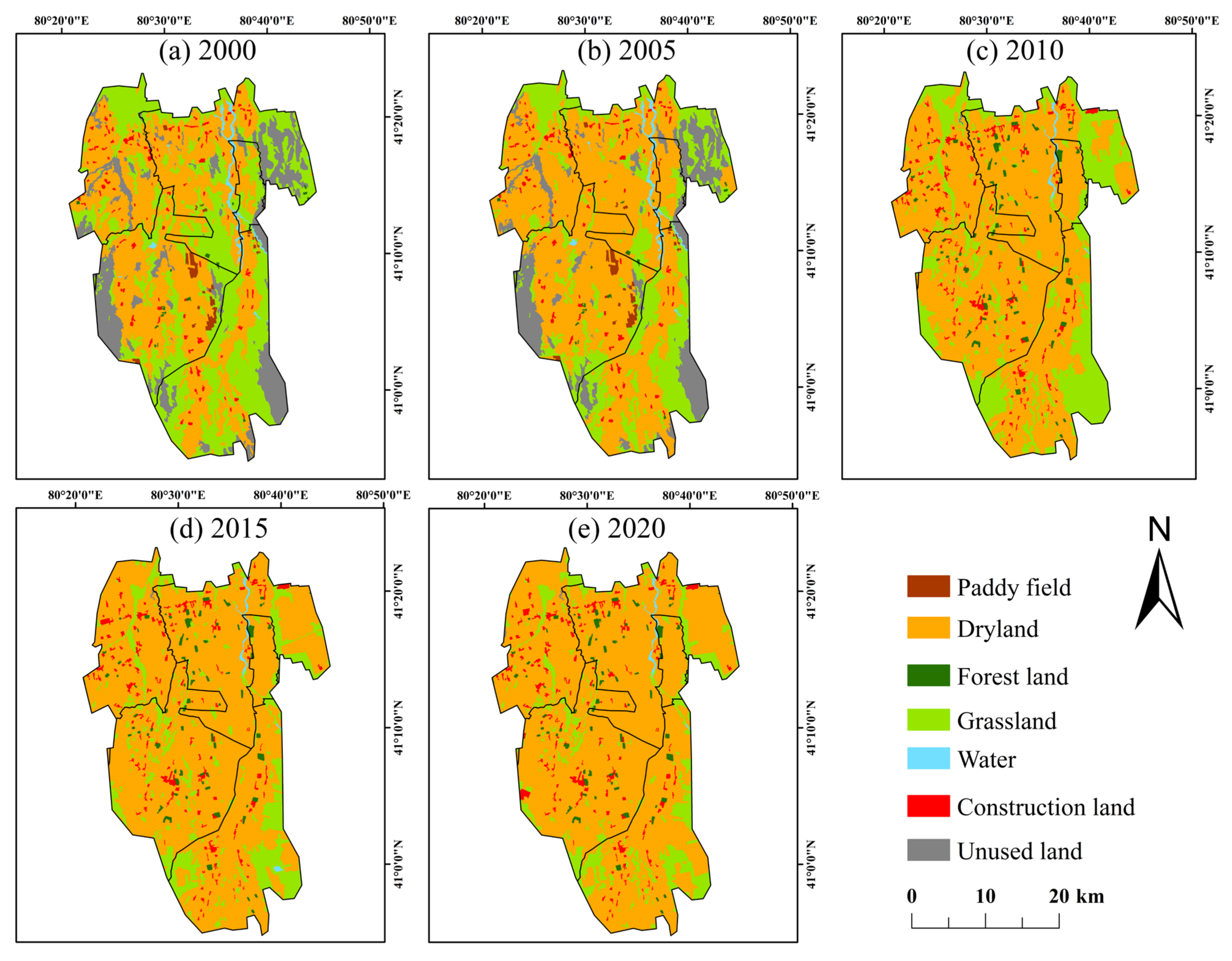
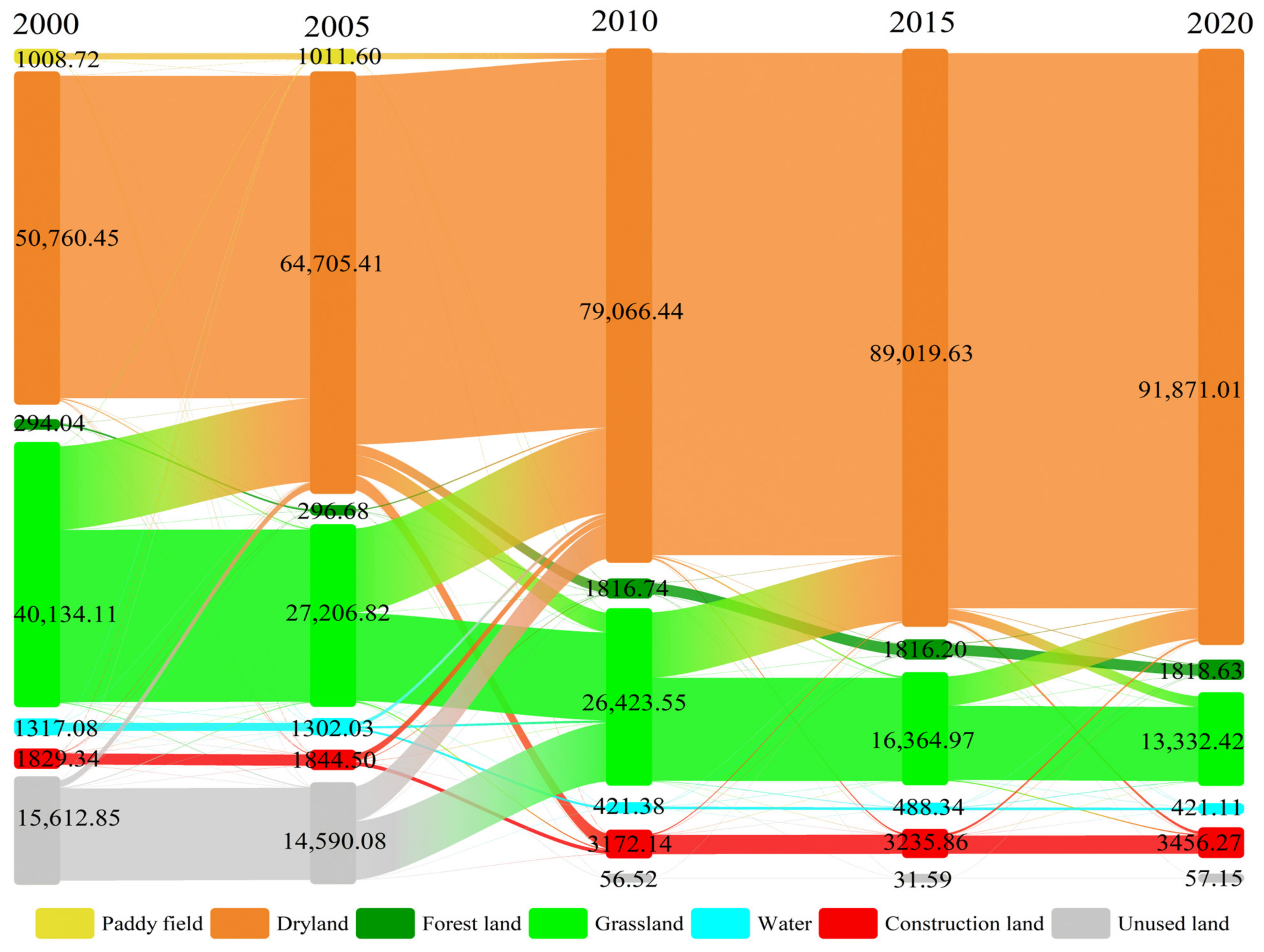
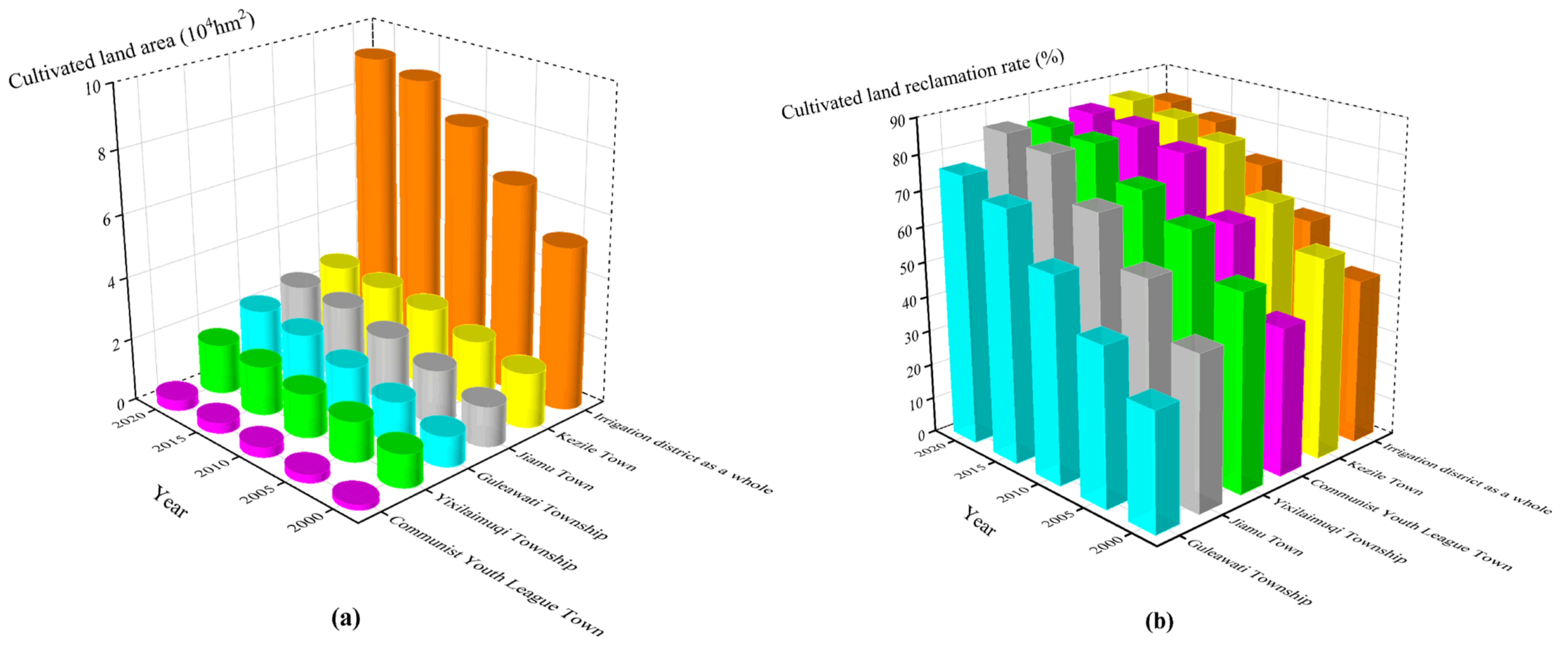
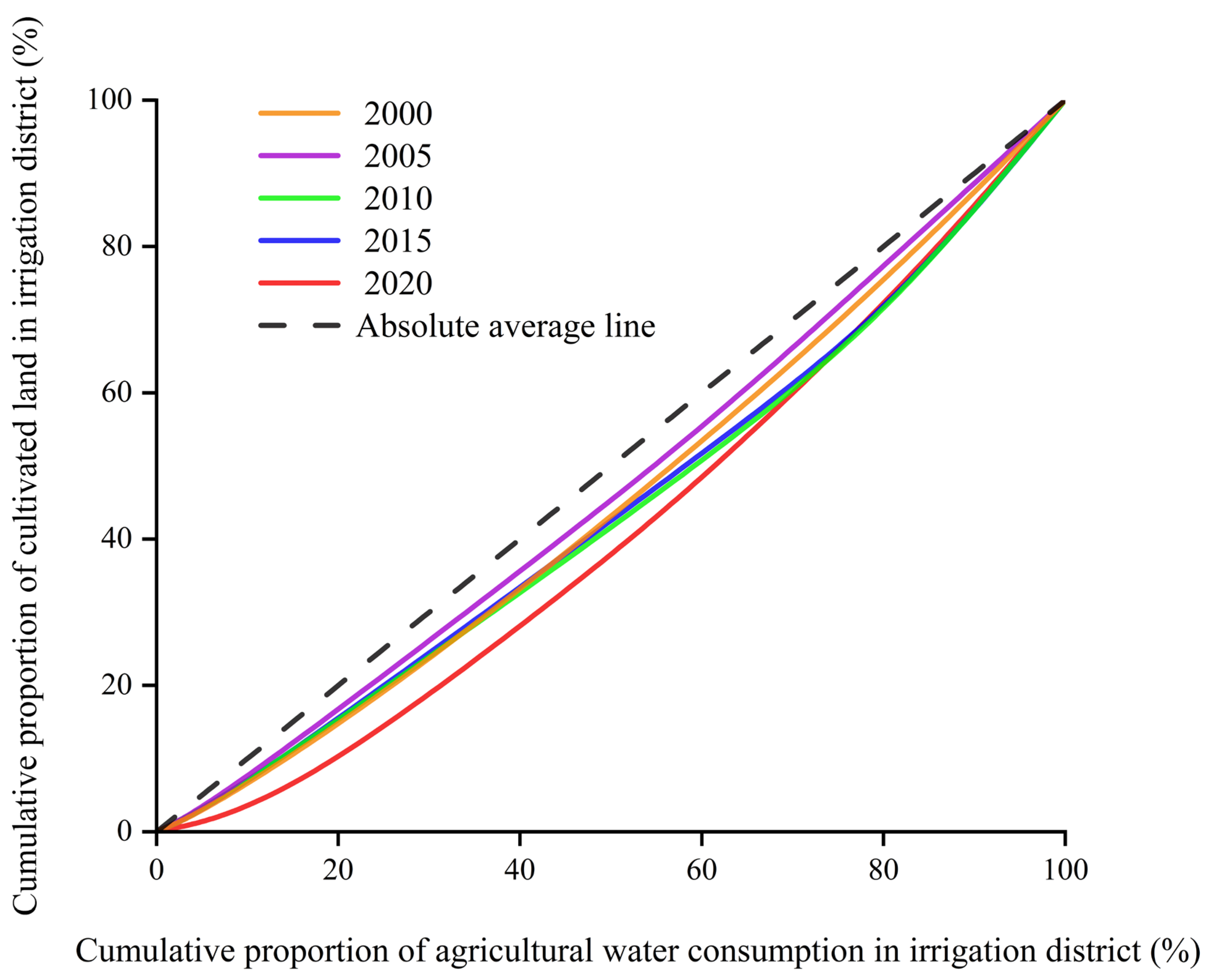
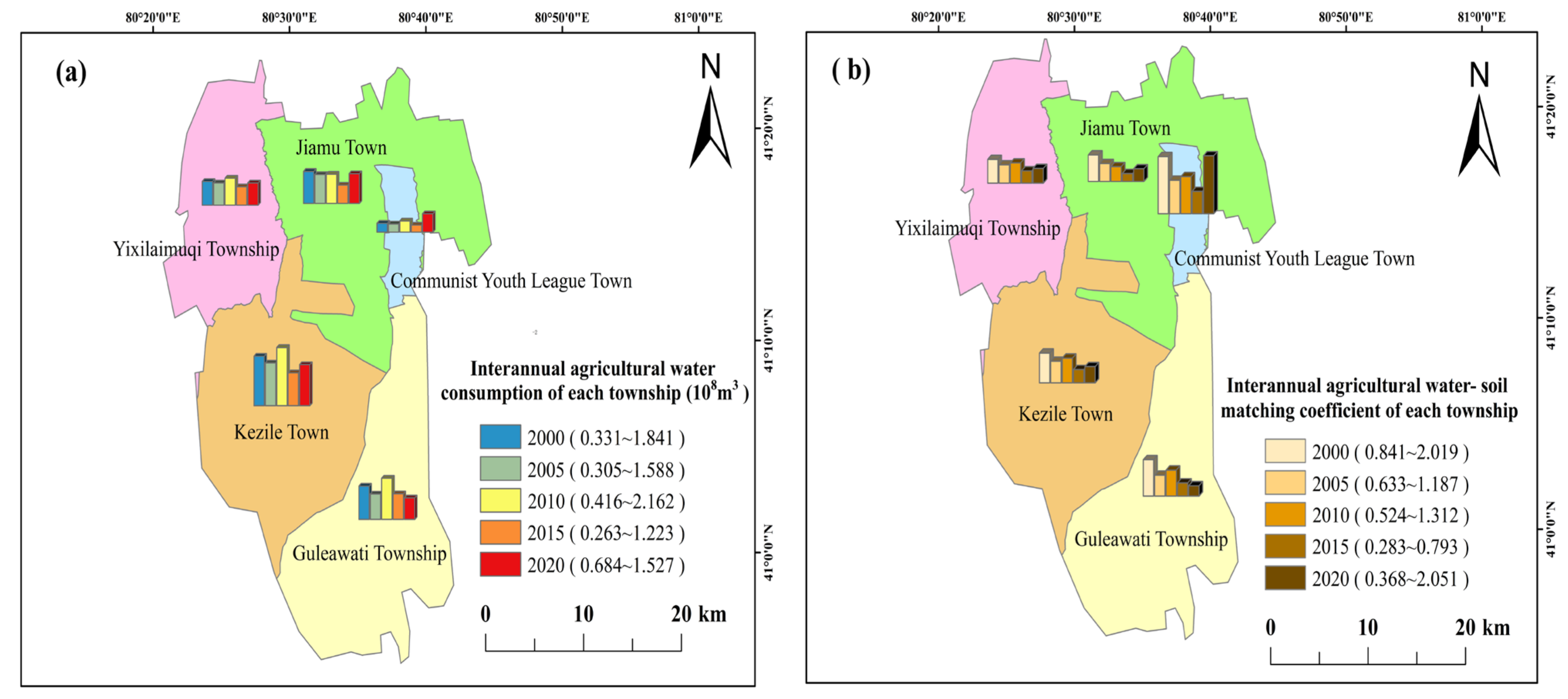
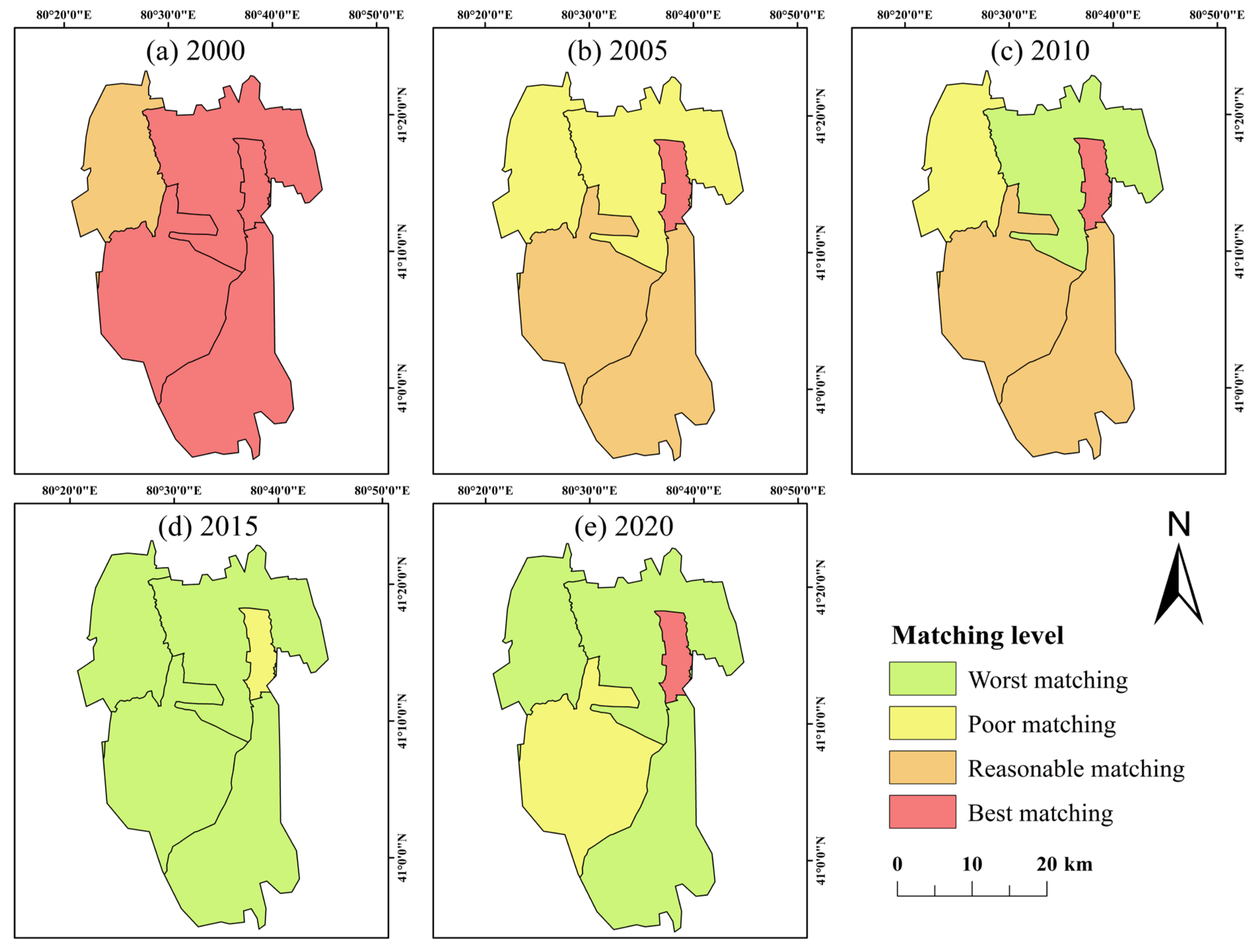
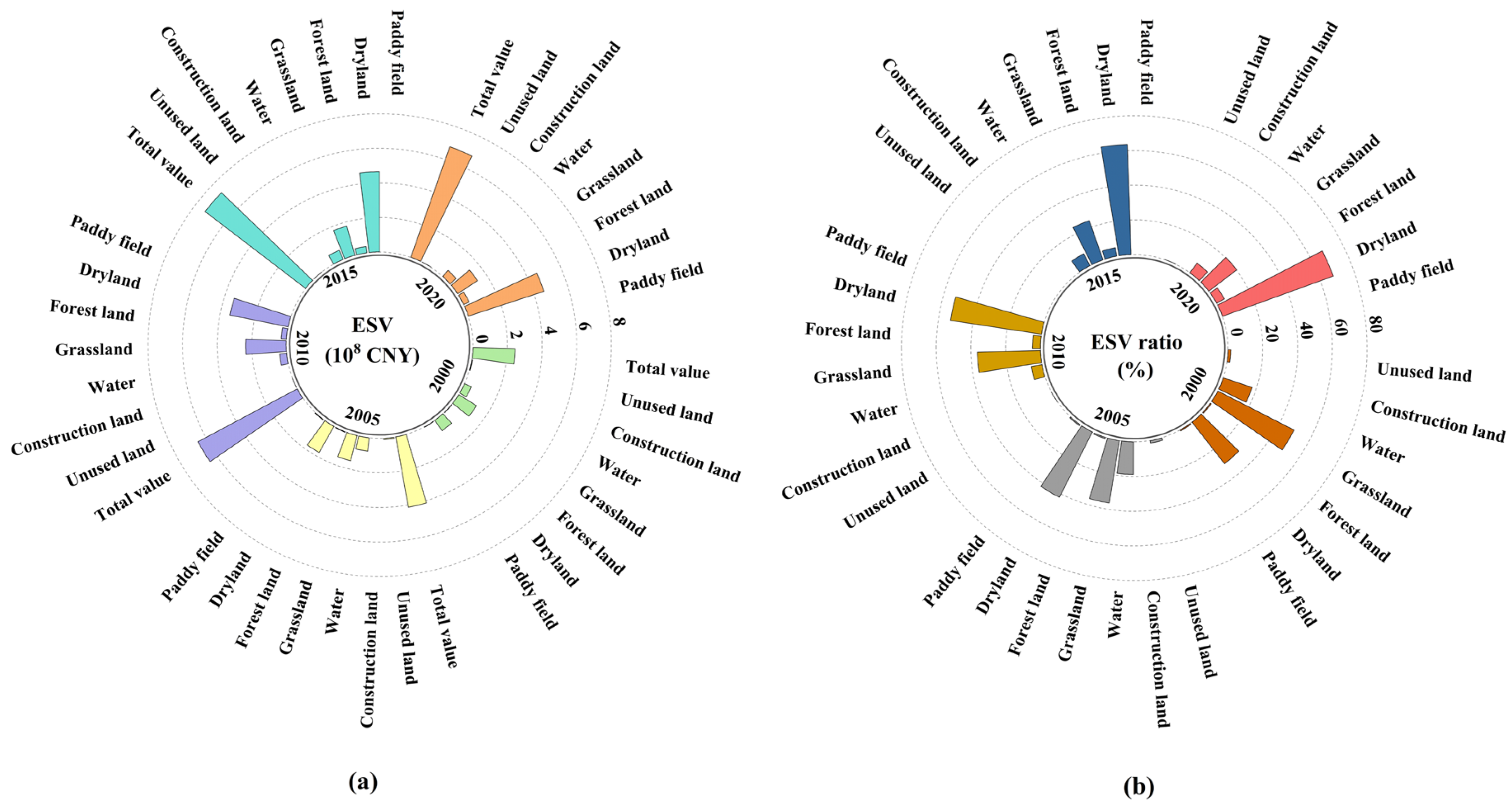
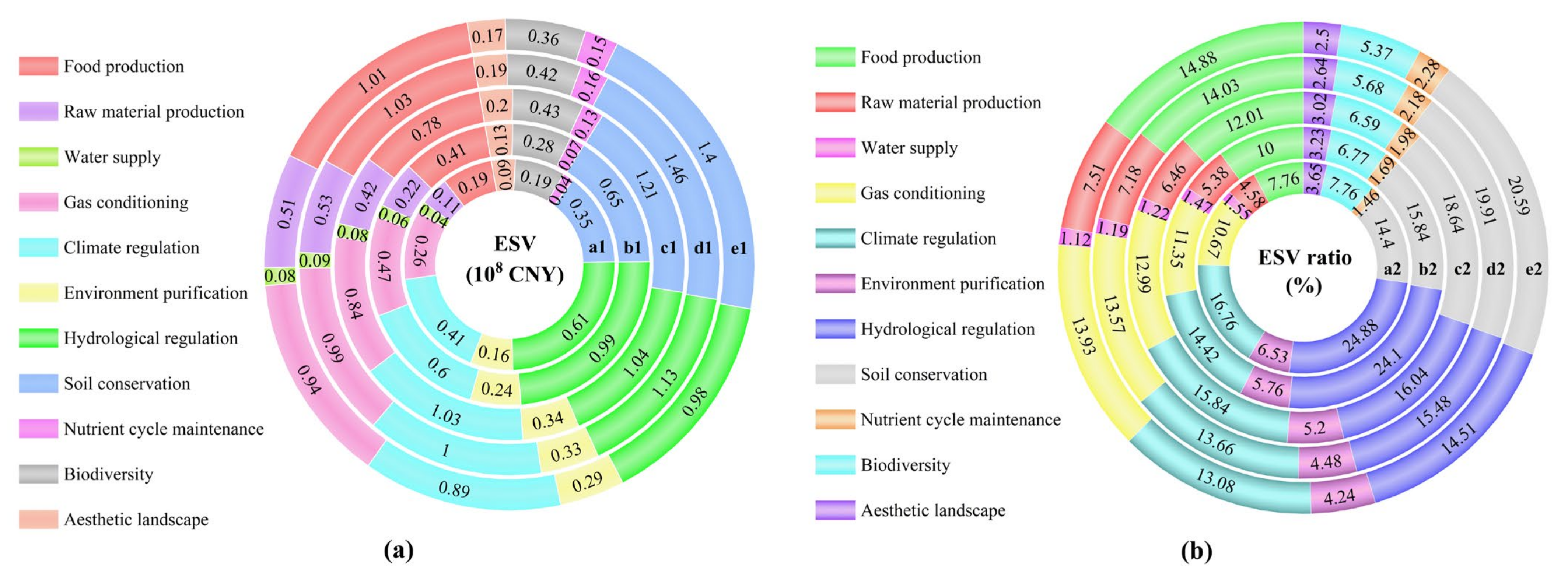
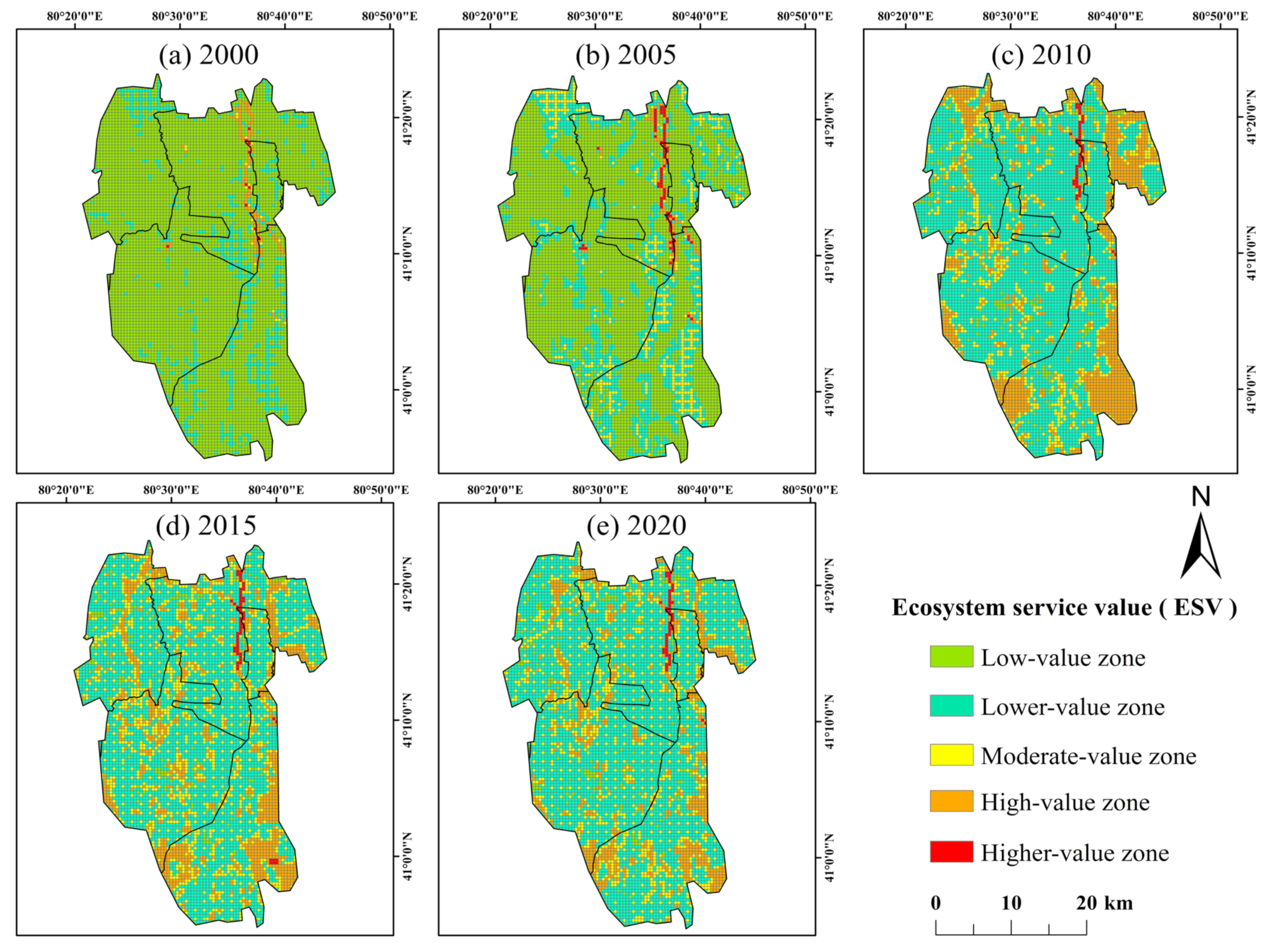

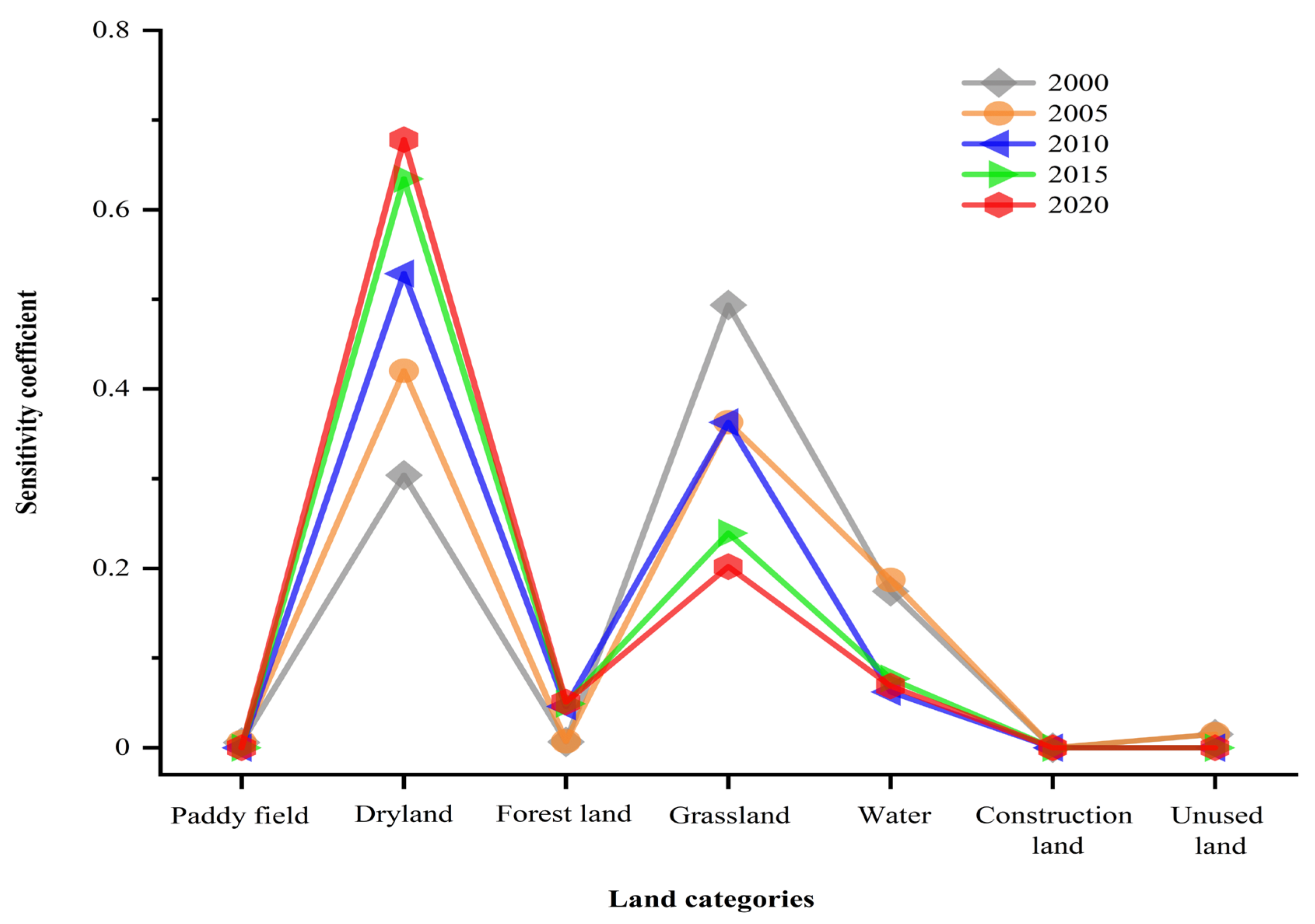
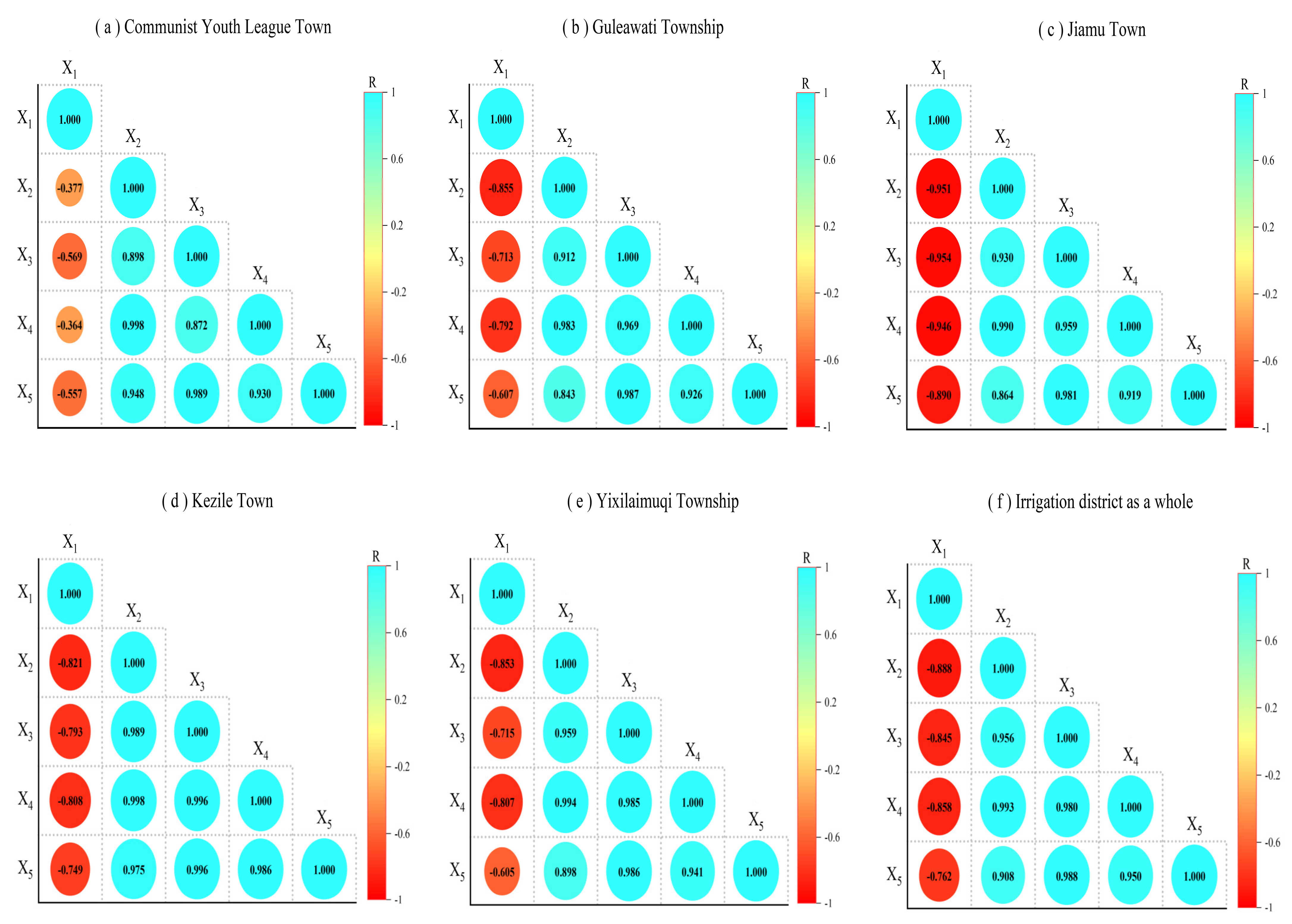
| Ecosystem Services | ESV Coefficient (CNY·hm−2·a−1) | ||||||
|---|---|---|---|---|---|---|---|
| Secondary Classification | Paddy Field | Dryland | Forest Land | Grassland | Water | Unused Land | |
| Provision services | Food production | 1268.55 | 792.84 | 177.22 | 149.24 | 610.96 | 4.66 |
| Raw material production | 83.95 | 373.10 | 401.09 | 219.20 | 340.46 | 13.99 | |
| Water supply | −2453.15 | 18.66 | 205.21 | 107.27 | 5074.20 | 9.33 | |
| Regulation services | Gas conditioning | 1035.36 | 624.95 | 1315.19 | 769.52 | 1245.23 | 60.63 |
| Climate regulation | 531.67 | 335.79 | 3945.56 | 2033.41 | 2746.97 | 46.64 | |
| Environment purification | 158.57 | 93.28 | 1193.93 | 671.59 | 4244.05 | 191.22 | |
| Hydrological regulation | 2537.10 | 251.84 | 3124.74 | 1487.75 | 58,982.92 | 111.93 | |
| Support services | Soil conservation | 9.33 | 960.74 | 1604.34 | 937.42 | 1511.07 | 69.96 |
| Nutrient cycle maintenance | 177.22 | 111.93 | 121.26 | 74.62 | 116.59 | 4.66 | |
| Biodiversity | 195.88 | 121.26 | 1464.43 | 853.47 | 4859.67 | 65.29 | |
| Cultural service | Aesthetic landscape | 83.95 | 55.97 | 643.60 | 377.77 | 3087.43 | 27.98 |
| Total | 3628.43 | 3740.36 | 14,196.57 | 7681.26 | 82,819.53 | 606.29 | |
| Land Categories | 2000~2005 | 2005~2010 | 2010~2015 | 2015~2020 | 2000~2020 | |||||
|---|---|---|---|---|---|---|---|---|---|---|
| Area | Dynamic Degree | Area | Dynamic Degree | Area | Dynamic Degree | Area | Dynamic Degree | Area | Dynamic Degree | |
| Paddy field | 2.88 | 0.06 | −1011.6 | −20.00 | 0.00 | 0.00 | 0.00 | 0.00 | −1008.72 | −5.00 |
| Dryland | 13,944.96 | 5.49 | 14,361.03 | 4.44 | 9953.19 | 2.52 | 2851.38 | 0.64 | 41,110.56 | 4.05 |
| Forest land | 2.64 | 0.18 | 1520.06 | 102.60 | −0.54 | −0.01 | 2.43 | 0.03 | 1524.59 | 25.94 |
| Grassland | −12,927.29 | −6.44 | −783.27 | −0.58% | −10,058.58 | −7.61 | −3032.55 | −3.71 | −26,801.69 | −3.34 |
| Water | −15.05 | −0.23 | −880.65 | −13.53 | 66.96 | 3.19 | −67.23 | −2.75 | −895.97 | −3.40 |
| Construction land | 15.16 | 0.17 | 1327.64 | 14.40 | 63.72 | 0.40 | 220.41 | 1.36 | 1626.93 | 4.45 |
| Unused land | −1022.77 | −1.31 | −14,533.56 | −19.92 | −24.93 | −8.82 | 25.56 | 16.18 | −15,555.7 | −4.98 |
| Comprehensive LU | 27,930.75 | 1.35 | 34,417.81 | 3.47 | 20,167.92 | 1.00 | 6199.56 | 0.68 | 88,524.16 | 1.28 |
| Years | Gini Coefficient (G) | Evaluation Results |
|---|---|---|
| 2000 | 0.101 | absolute fairness |
| 2005 | 0.066 | absolute fairness |
| 2010 | 0.125 | absolute fairness |
| 2015 | 0.118 | absolute fairness |
| 2020 | 0.181 | absolute fairness |
| 2000~2020 | 0.118 | absolute fairness |
| Irrigation District Administrative Units | ESV Interannual Total Value (10 8 CNY) | Interannual Change Rate of ESV (%) | ||||||||
|---|---|---|---|---|---|---|---|---|---|---|
| 2000 | 2005 | 2010 | 2015 | 2020 | The Mean Value of 5 Periods | 2000~2005 | 2005~2010 | 2010~2015 | 2015~2020 | |
| Guleawati Township | 0.64 | 1.09 | 1.76 | 1.98 | 1.76 | 1.45 | 71.15 | 61.82 | 12.32 | −11.07 |
| Jiamu Town | 0.80 | 1.36 | 1.93 | 2.14 | 2.01 | 1.65 | 69.85 | 42.55 | 10.44 | −5.85 |
| Communist Youth League Town | 0.13 | 0.21 | 0.26 | 0.30 | 0.29 | 0.24 | 64.38 | 19.58 | 17.50 | −4.50 |
| Kezile Town | 0.53 | 0.90 | 1.58 | 1.83 | 1.71 | 1.31 | 68.70 | 75.63 | 16.29 | −6.83 |
| Yixilaimuqi Township | 0.33 | 0.57 | 0.97 | 1.06 | 1.01 | 0.79 | 70.59 | 70.15 | 9.97 | −4.94 |
| Total region | 2.43 | 4.13 | 6.50 | 7.32 | 6.78 | 5.43 | 69.75 | 57.44 | 12.58 | −7.32 |
Disclaimer/Publisher’s Note: The statements, opinions and data contained in all publications are solely those of the individual author(s) and contributor(s) and not of MDPI and/or the editor(s). MDPI and/or the editor(s) disclaim responsibility for any injury to people or property resulting from any ideas, methods, instructions or products referred to in the content. |
© 2025 by the authors. Licensee MDPI, Basel, Switzerland. This article is an open access article distributed under the terms and conditions of the Creative Commons Attribution (CC BY) license (https://creativecommons.org/licenses/by/4.0/).
Share and Cite
Ruan, Y.; He, Y.; Qiu, Y.; Ma, L. Study on the Trade-Off and Synergy Between Agricultural Water–Soil Matching and Ecosystem Service Value in the Tailan River Irrigation District of Xinjiang. Sustainability 2025, 17, 4173. https://doi.org/10.3390/su17094173
Ruan Y, He Y, Qiu Y, Ma L. Study on the Trade-Off and Synergy Between Agricultural Water–Soil Matching and Ecosystem Service Value in the Tailan River Irrigation District of Xinjiang. Sustainability. 2025; 17(9):4173. https://doi.org/10.3390/su17094173
Chicago/Turabian StyleRuan, Yufan, Ying He, Yue Qiu, and Le Ma. 2025. "Study on the Trade-Off and Synergy Between Agricultural Water–Soil Matching and Ecosystem Service Value in the Tailan River Irrigation District of Xinjiang" Sustainability 17, no. 9: 4173. https://doi.org/10.3390/su17094173
APA StyleRuan, Y., He, Y., Qiu, Y., & Ma, L. (2025). Study on the Trade-Off and Synergy Between Agricultural Water–Soil Matching and Ecosystem Service Value in the Tailan River Irrigation District of Xinjiang. Sustainability, 17(9), 4173. https://doi.org/10.3390/su17094173








